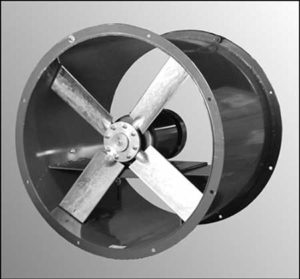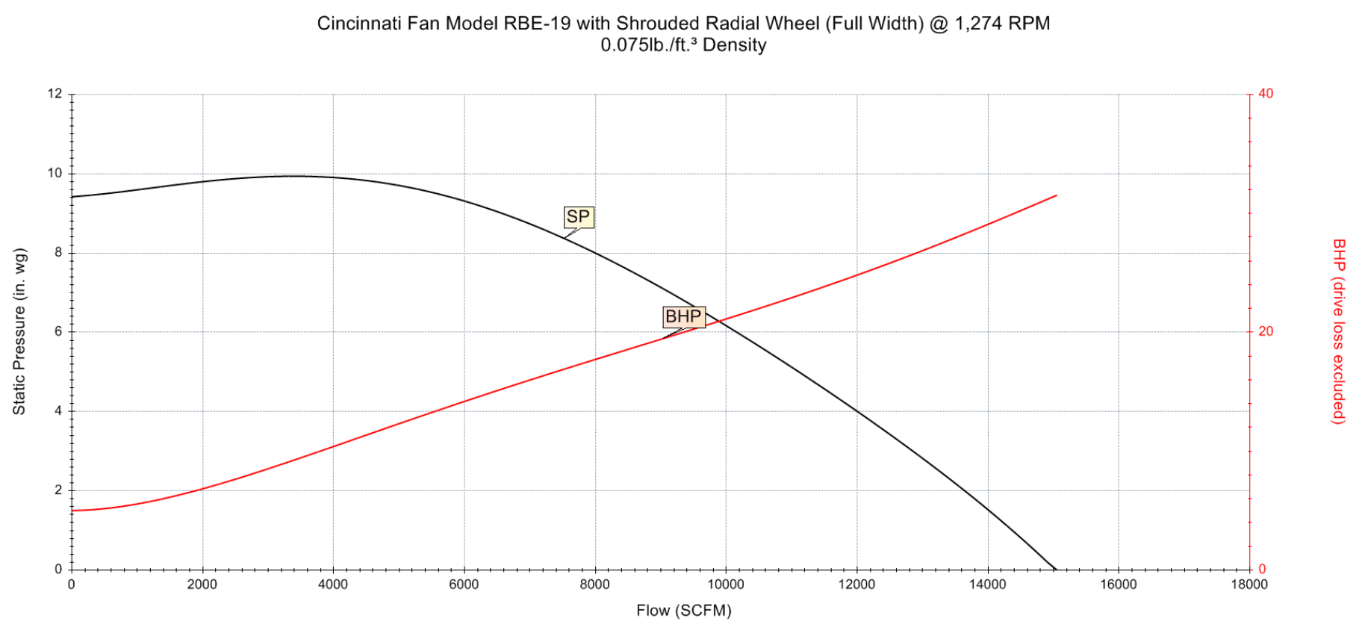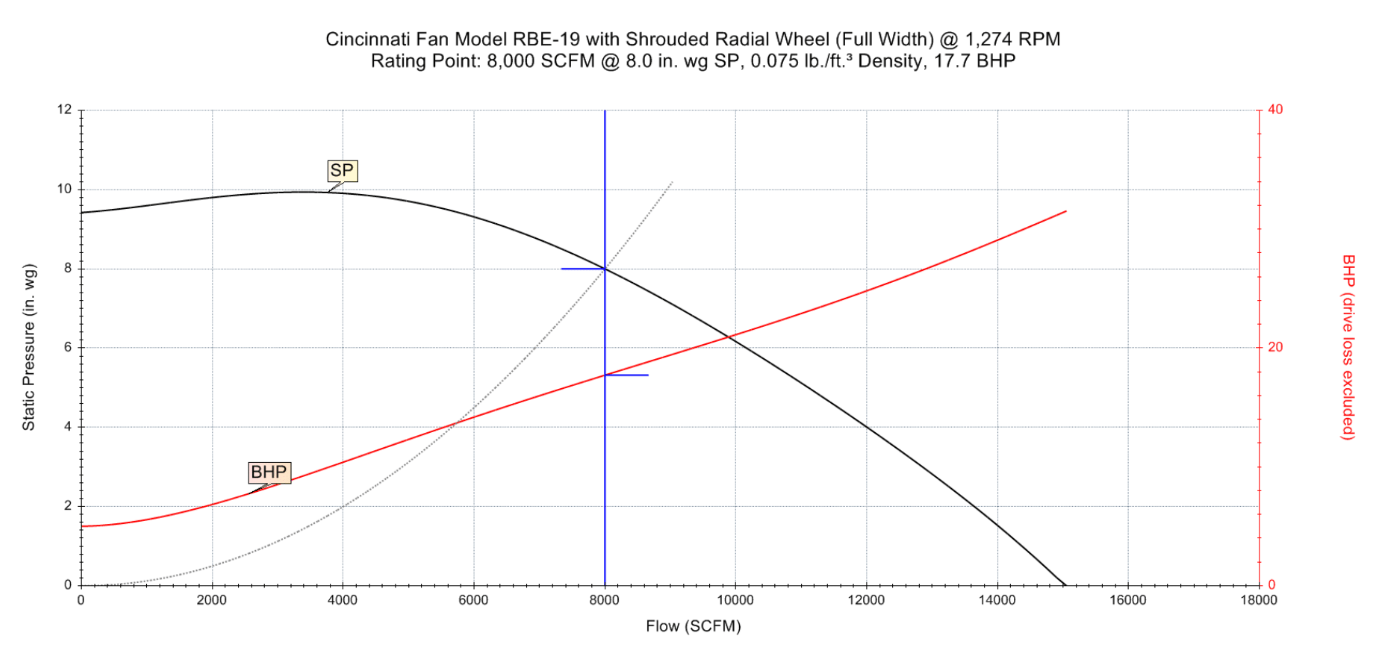 Being able to read a fan curve will allow you to choose the best fan for your requirements, as long as the fan is properly tested and certified. Fan curves graphically depict fan performance data of CFM, RPM, SP, and BHP.
Being able to read a fan curve will allow you to choose the best fan for your requirements, as long as the fan is properly tested and certified. Fan curves graphically depict fan performance data of CFM, RPM, SP, and BHP.
The first thing to note about the fan curve graph is that it has 3 axes:
- Horizontal Bottom Axis = Air Volume Flow Rate (SCFM or m3/sec.)
- Vertical Left Axis = Static Pressure (inches water gauge [wg], pascals [Pa], or mm water gauge)
- Vertical Right Axis = Brake Horsepower (BHP or KW)
The fan curve graph actually demonstrates two curves related to the same fan:
CFM VS SP CURVES
The static pressure curve shows the relationship between the static pressure capabilities of the fan compared to the fan’s air volume flow rate at a given fan speed.CFM VS BHP CURVES
The second curve shows the relationship between the fan’s air volume flow rate and the brake horsepower. (red color curve and axis)

SELECT YOUR DESIRED CFM
Once you select your CFM, draw a line vertically up to intersect the CFM vs SP Curves that run from lower right to upper left. In our example, we’ve chosen 8,000 CFM, marked with a blue vertical line.
SELECT YOUR DESIRED SP
Draw a horizontal line through the vertical left axis at the desired fan pressure to where it intersects the vertical line you just made. In our example, we’ve chosen 8 inches wg Static Pressure. When the intersection of these two lines is not right on the curve, you will need to calculate and draw a System Curve and redraw the fan curve at a different RPM [we will cover system curves and Affinity or Fan Laws in another post].
DETERMINE MOTOR HORSEPOWER
Draw a vertical line up from the point where the System Curve intersects the CFM vs SP Curve to where it crosses the CFM vs BHP Curve for the fan. This is the BHP that the fan will require to produce the desired CFM and Pressure at the given fan speed.
To review, in this example, the desired performance is 8,000 CFM at 8 inches wg SP. Drawing a line up to the CFM vs BHP Curve indicated that this configuration will require 17.7 BHP to achieve 8,000 CFM. In this scenario, we would recommend a 25 HP motor to account for the belt drive losses and provide some future fan performance adjustments if required.
We generate and select centrifugal fans and curves at G Squared and are always available to help with your fan selection needs.



